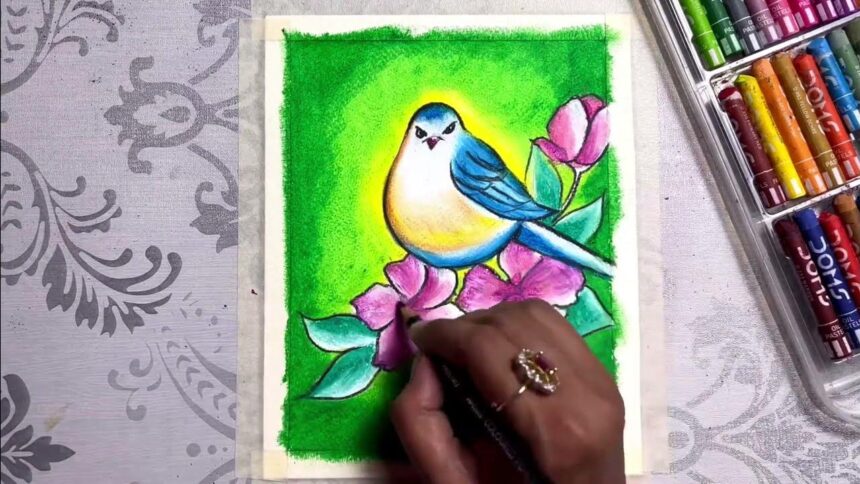Introduction: Embrace the World of Easy Drawings
Drawing can be a deeply satisfying and creative outlet, but many people are intimidated by picking up a pencil. The truth is, easy drawings can be both fun and simple to master! Whether you’re a beginner or just looking to sharpen your skills, this guide will take you through the basics, offering tips and techniques that make drawing approachable for everyone.
No matter your age or experience, easy drawing techniques can help you unlock your artistic potential and start expressing yourself through art. Let’s dive into the world of easy drawings and discover how you can start creating art in no time.
Why Start with Easy Drawings?
When starting with art, tackling a complicated subject can be frustrating. Easy drawings give you the confidence to improve your skills without feeling overwhelmed. Here’s why you should begin with easy drawings:
- Accessible for Everyone: Whether you’re 5 or 55, easy drawings can help you understand the basics of art, such as line, shape, and shading.
- Boosts Creativity: Simple sketches can quickly evolve into more complex artworks as you gain confidence.
- Relaxation and Stress Relief: Drawing, even when you’re not a professional, is known to be an excellent stress reliever.
Tools You Need for Easy Drawings
To get started with easy drawings, you don’t need fancy tools. Here are the essentials:
- Pencils: A simple graphite pencil set is perfect for beginners. Different grades, such as 2B or 4H, give you a range of light to dark shades.
- Paper: Standard sketching paper will do just fine, but you can also use printer paper when practicing.
- Erasers: Kneaded erasers work wonders for cleaning up smudges and making corrections.
- Sharpener: Keep your pencils sharp to maintain control over your lines.
- Optional: Colored pencils or markers can add a splash of color once you’re comfortable with basic sketches.
Step-by-Step Guide to Creating Easy Drawings
Let’s get started with some easy drawings that anyone can do. Below, we’ll break down a few different types of drawings step-by-step.
- Simple Shapes
Start with the basics: circles, squares, triangles, and ovals. These shapes form the foundation for nearly every drawing you will create. Here’s how you can practice:
- Draw a series of circles in different sizes. Focus on keeping your hand steady.
- Sketch triangles and squares next. Try making them freehand for a more natural feel.
- Use these shapes to build more complex drawings, such as animals or objects.
- Easy Flower Drawing
Flowers are one of the easiest and most beautiful subjects to draw. Start with a simple five-petal flower:
- Step 1: Draw a small circle in the center.
- Step 2: Surround the circle with five evenly spaced petal shapes.
- Step 3: Add details like lines in the petals and a stem.
- Cute Cartoon Animals
Once you’re comfortable with basic shapes, try combining them to draw cute cartoon animals.
- Step 1: Draw a circle for the head and two small ovals for the ears.
- Step 2: Sketch the body using a larger oval.
- Step 3: Add small circles for the eyes and a triangle for the nose.
- Step 4: Add legs and a tail using simple lines.
Tips to Improve Your Easy Drawings
As you practice, you’ll notice your drawings improving over time. Here are some tips to help you progress:
- Start Light: Always sketch with a light hand at first. This way, you can easily erase and adjust lines as needed.
- Practice Daily: Even spending just 15 minutes a day on easy drawings can help you improve quickly.
- Focus on Proportions: Pay attention to the proportions of your drawing, especially when sketching people or animals.
- Use References: Don’t hesitate to use photos or other drawings as references to help guide your work.
- Experiment with Shading: Once you’re comfortable with outlines, try adding shading to give your drawings more depth.
Easy Drawing Ideas to Spark Your Creativity
If you’re feeling stuck or unsure what to draw, here are some easy drawing ideas:
- Nature: Trees, leaves, and mountains are great for beginners.
- Animals: Cats, dogs, and birds can all be simplified into easy cartoon shapes.
- Objects: Practice drawing simple household objects like cups, books, or chairs.
- Fantasy Creatures: Have fun and let your imagination run wild by creating mythical creatures like dragons or unicorns.
Common Mistakes to Avoid When Starting Out
As you practice, it’s natural to make mistakes. Here are some common drawing errors and how to avoid them:
- Overworking a Drawing: Don’t spend too much time on a single sketch. It’s better to move on and try again rather than fixate on one drawing.
- Ignoring Proportions: Take time to measure proportions, especially when drawing faces or animals.
- Being Too Hard on Yourself: Remember, everyone starts as a beginner. Don’t be discouraged by early mistakes; they’re part of the learning process.
FAQs About Easy Drawings
Q1: What are the best subjects for beginners to draw?
A: Start with simple shapes and everyday objects like cups or flowers. As you build confidence, move on to drawing animals, people, or landscapes.
Q2: Do I need special tools to create good drawings?
A: Not at all! Basic supplies like a pencil and paper are all you need to start practicing easy drawings.
Q3: How long does it take to get good at drawing?
A: It depends on how much time you dedicate to practicing. With regular practice, you’ll notice improvement within weeks.
Q4: Can I learn to draw even if I have no experience?
A: Absolutely! Anyone can learn to draw with patience, practice, and the right guidance.
Q5: How do I add details to my easy drawings?
A: Once you’re comfortable with basic outlines, focus on shading and textures to add depth and dimension to your drawings.
Conclusion: Unlock Your Creativity with Easy Drawings
Drawing doesn’t have to be complicated. With these tips and techniques, easy drawings can help you build a strong foundation in art while having fun along the way. Remember, every great artist started somewhere, and with consistent practice, you’ll be amazed at how quickly your skills improve.








